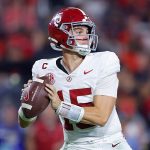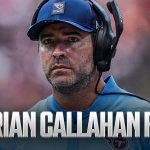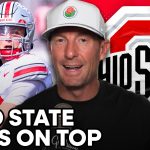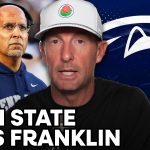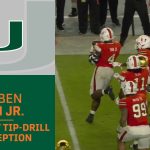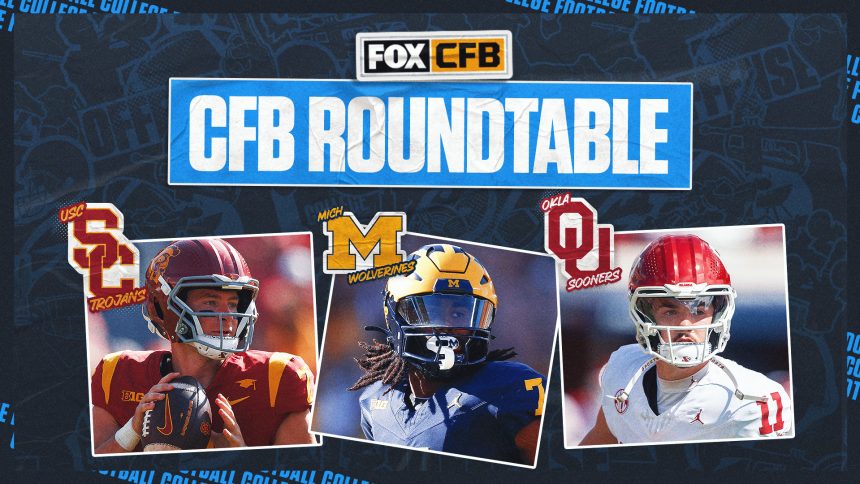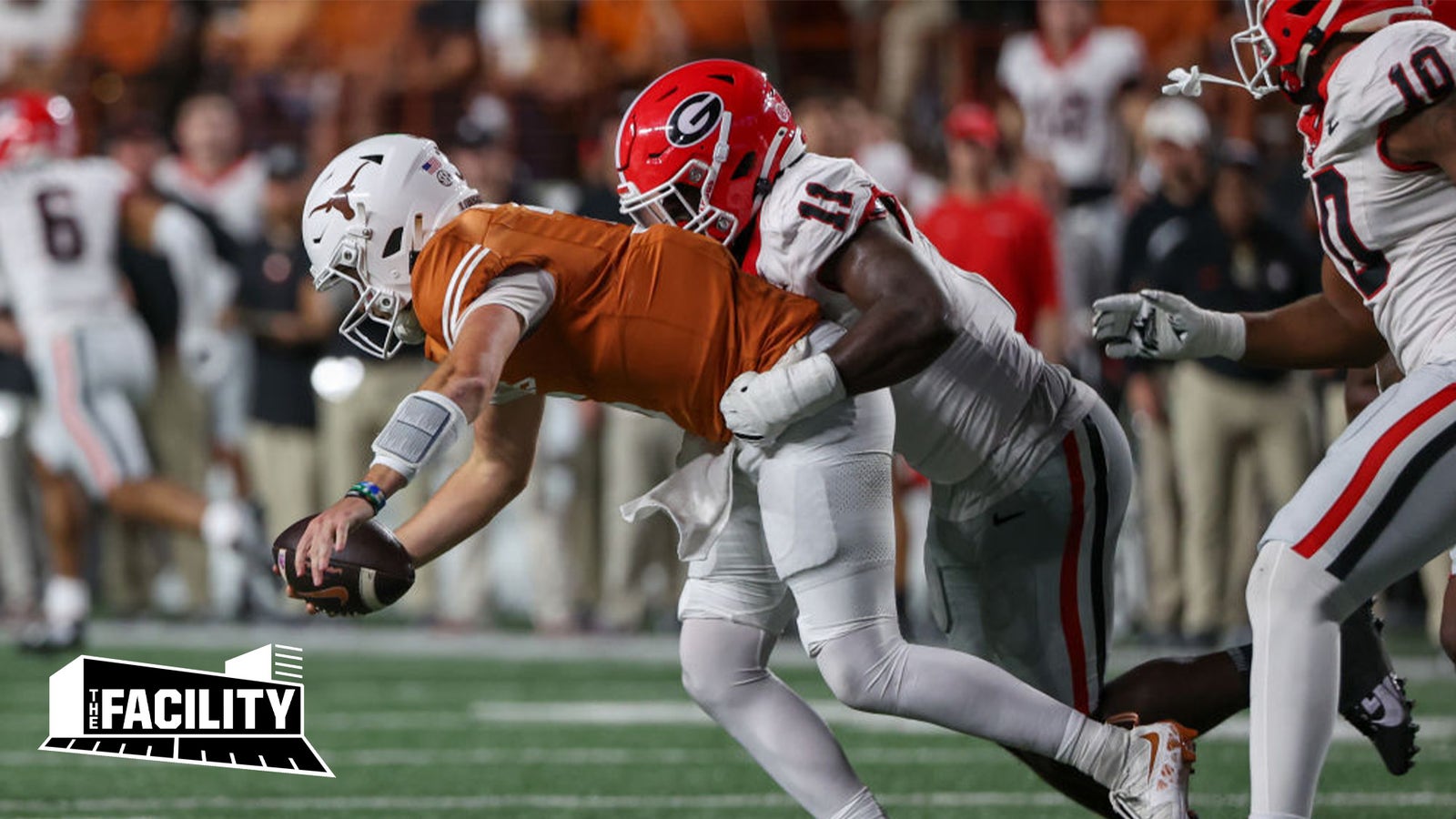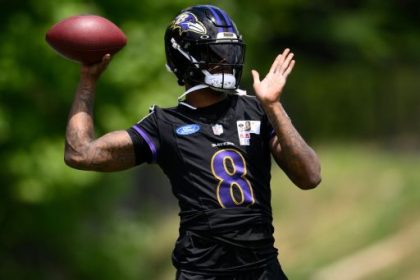RJ Young
FOX Sports National College Football Analyst
Michael Cohen
College Football and College Basketball Writer
Florida State, Michigan, Oklahoma and USC were all ranked in the preseason AP Top 25 college football rankings, with both the Seminoles and Wolverines listed in the top 10. Fast-forward 10 weeks, and not only are all four programs currently ranked outside the top 25, but all four have at least three losses just eight weeks into the season.
Michigan, the defending national champions, along with Oklahoma, both sit at 4-3 heading into Week 9. USC, playing in its first season in the Big Ten, is 3-4 with three straight conference losses, essentially ending its conference title and College Football Playoff hopes at the midway point of the season. And while those three schools have struggled mightily to meet expectations, no one has it as bad as Florida State, as the Seminoles sit at 1-6, with the team’s lone win coming against a 3-4 Cal team back in Week 4 of the season.
So, the question is: which of these four traditional powerhouse programs has been the most puzzling through the first eight weeks of the season?
FOX Sports college football writers Michael Cohen and RJ Young are here to answer that question, as well as preview a pair of big-time matchups, including this weekend’s “Big Noon Kickoff” game on FOX between Nebraska and No. 4 Ohio State (Noon ET on FOX and the FOX Sports App).
ADVERTISEMENT
Nebraska travels to Columbus to take on No. 4 Ohio State Saturday on FOX. What do you expect to see from Ryan Day’s team coming off a bye following the Buckeyes’ loss to Oregon?
Michael Cohen: After losing to Oregon in the manner that Ohio State did two weeks ago — with its ballyhooed defense shredded for big gain after big gain by the Ducks — there’s little question that defensive coordinator Jim Knowles needs to make changes if the Buckeyes want to achieve their goal of not just reaching the College Football Playoff, but winning it. And the most obvious place to look is in the trenches, where Ohio State’s pass rushers continue to underwhelm despite their lofty recruiting rankings and sky-high expectations.
Among the large group of veterans who bypassed the chance to enter the NFL Draft in favor of returning to Ohio State for another season, edge rushers Jack Sawyer (senior) and JT Tuimoloau (senior) were two of the most important players. A pair of former five-star recruits, they combined for 5.5 sacks and 74 quarterback pressures last season to lead the Buckeyes in both categories. Most fans and local beat writers expected them to light the world on fire in 2024 as one of the most experienced and highly touted edge-rusher pairings in the country.
But in the biggest game of the season, and against an Oregon offensive line that was exposed, at times, by the likes of Idaho (three sacks) and Boise State (four sacks), the duo of Sawyer and Tuimoloau fell flat in their pursuit of the Ducks. They did not record a sack, they only combined to make one tackle for loss, and Sawyer never got so much as a hand on quarterback Dillon Gabriel, according to the official box score. For Tuimoloau, it was his second-worst outing of the season based on the pass-rushing metric on Pro Football Focus. For Sawyer, it was his worst. That can’t happen moving forward if the Buckeyes want to beat the best teams in the country.
RJ Young: The Buckeyes are a CFP team. And they need to show that against Nebraska.
You’ve built a roster and a staff to reflect an ambition to not just make the playoff, but to do the whole damn thing right here, right now. You’ve spent your bye week reflecting on a one-point loss to the No. 1 team in the sport.
The Buckeyes are gonna bang through what’s left of their regular season, reload, and go hunting duck.
But they have to start with pummeling the Huskers. In 2020, Ryan Day apologized for not taking a knee in the Buckeyes’ 52-17 hammering of the Huskers. This year, he won’t have that luxury. The CFP selection committee desires dominance the rest of the way from a team like OSU. Nebraska just happens to be a level Ohio State has to clear on the way to the final boss fight.
Given the Huskers rank 90th in scoring offense, 99th in rushing yards and 57th in passing yards, the scoreboard shouldn’t look much different for Ohio State than it did for Indiana last week against Nebraska.
Conversely, Nebraska is coming off a blowout loss to Indiana last weekend and has now lost 26 straight games against top-25 opponents. How does Matt Rhule’s team avoid another embarrassing loss to a conference foe this weekend?
RJ: Can Nebraska turn into Oregon overnight? I doubt it.
It’s not just that Nebraska has lost 26 straight against top 25 opponents. It’s that Nebraska is 0-5 when a win would grant them bowl eligibility in the Matt Rhule era. This is the definition of folding under pressure.
And that’s what Indiana did to the Husker defense: fold them into a Ric Flair figure four with 495 yards, 215 of which came on the ground — 6.5 per carry — and 56 points. And in one fell swoop, a defense many believed to be elite, looks less like Voltron and more like getting zapped by Zakron.
I expect Ohio State to show its power, the strength of the Buckeye empire flowing through its veins and their wrath felt. But it ain’t the first time a Matt Rhule Huskers team got wrecked by a Big Ten title contender.
Michigan stomped a 45-7 mudhole in Nebraska last year.
“Last year, it was Michigan, right?” Rhule said Monday. “Then, we rebound from that and get ourselves to 5-3 and just can’t quite get over the hump.”
A loss to Ohio State puts Nebraska right there at 5-3 with four shots left to earn a spot in the postseason for the first time in eight years.
Michael: Without the ability to transform into Oregon overnight, as RJ suggested, there’s no good way for Nebraska to avoid another loss this weekend unless Ohio State trips itself up with enough turnovers and penalties to offset an obvious talent gap between the two sides. And the chances of that happening after the Buckeyes endured two straight weeks of hide chewing — from both within and without the Woody Hayes Athletic Center — seems highly unlikely. Head coach Ryan Day and his team will have plenty of motivation ahead of Saturday’s game at Ohio Stadium.
But from Nebraska’s perspective, the most disheartening part of last week’s 56-7 loss to then-No. 16 Indiana was the referendum it offered on two programs undergoing seismic rebuilds — and more specifically, the pace at which those rebuilds are occurring. There’s little doubt that head coach Matt Rhule has reinvigorated the Cornhuskers during his first two seasons in Lincoln, where winning football had become little more than a fond memory for a once-proud program. But even after a massive roster overhaul, the arrival of a five-star freshman quarterback that was pursued by every blue blood in the country, an incredible new football facility and an improved NIL program, Nebraska still can’t find a way to beat ranked opponents.
Juxtapose that with what Indiana head coach Curt Cignetti has done in a matter of months — launching the Hoosiers into the top 15 in the national rankings and pummeling teams on both sides of the ball, all without the same university and community investment that Rhule has — and what happened in Bloomington, Indiana, last Saturday had to be alarming for the Cornhusker faithful. This weekend won’t be much different against Ohio State.
Steve Sarkisian made the decision to bench Quinn Ewers for Arch Manning during Texas‘ loss to Georgia, and then go back to Ewers in the second half. Sarkisian went on record saying, “Quinn’s our starting quarterback” on Sunday, but what do you make of this situation as Texas gets set to travel to Nashville to take on No. 25 Vanderbilt?
Michael: Given the way Texas head coach Steve Sarkisian has spoken about the perceived competition between quarterbacks Quinn Ewers and Arch Manning since the end of last season, with his repeated votes of confidence in the former and a general dismissal of the idea that his two signal-callers are even jockeying for the top spot at all, the decision to make a temporary swap when things weren’t going well against Georgia felt like just that — a coach trying something, anything, to stop the bleeding on an uncharacteristically rough night for one of his best players. It was searching for a spark rather than a full-fledged changing of the guard.
And right now, after one tough outing for Ewers, that seems like the right approach. While the youthful Manning certainly injects the Texas offense with more mobility and a stronger arm — traits that make his future tantalizing to think about — he falls well short of Ewers when it comes to the experience, veteran leadership and poise that are critical to making a run at the College Football Playoff. Not only has Ewers already demonstrated those traits on the field by leading the Longhorns to within a play or two of reaching the national championship game last year, but he’s also outperformed Manning in moments that test those characteristics during games. When under pressure this season, Ewers has completed 18 of 35 passes (51.4%) for 237 yards, two touchdowns and one interception on 44 dropbacks, according to Pro Football Focus. Manning, meanwhile, is 6-of-16 (37.5%) for 150 yards, three touchdowns and one interception on 24 dropbacks. When blitzed, Ewers’ completion percentage is 63.3% with five touchdowns and no interceptions. Manning’s completion rate against the blitz is 60.6% with four touchdowns and no interceptions.
Ride with the veteran a while longer.
RJ: Vandy is ranked. Vandy is good. Vandy moves. What will Texas do?
Move or die.
In the 2018 national title game, Nick Saban pulled the more mobile threat but the worse deep-ball passer and starter in Jalen Hurts for the less mobile but better deep ball-passer in backup Tua Tagovailoa to take advantage of a matchup Alabama believed it could exploit on the perimeter. Spoilers ahead? It worked. Alabama won the national title.
Move or die.
In the 2021 edition of OU-Texas, Lincoln Riley pulled seasoned starter Spencer Rattler for the more explosive and athletic Caleb Williams when OU trailed Texas, 35-17. Spoilers? That worked too. Oklahoma won 55-48 at the Cotton Bowl.
Move or die.
Steve Sarkisian saw that unfold before him in his Year 1 at Texas. He probably saw Saban do it first at Mercedes-Benz Stadium where he coordinated the Atlanta Falcons in 2018. He probably locked that away. He probably put that move in his back pocket for just a moment like the one he was staring at with 4:43 left in the first half of a game where Texas couldn’t move the ball. So, he pulled the seasoned and talented deep-ball passer in Quinn Ewers for the more athletic and explosive playmaker in Arch Manning. Spoilers? It didn’t work.
Move or die.
He went back to No. 1 on the depth chart. Ewers gave the Longhorns the best chance to win, and he still does. Sure, pocket awareness needs to improve for Ewers. But against UGA’s front seven, that is like saying move or die.
Florida State, Michigan, USC and Oklahoma are among the top brands in college football, but the four schools have a combined record of 12-16. Which of these programs has been the most puzzling through the first eight weeks of the season?
RJ: Michigan won the national title last year. Hit the mute button and go shine the trophy, Wolverines.
But USC — woof!
USC being this bad, this soon, is eyebrow-raising. It’s not just that the Trojans are 3-4. It’s that they’re seemingly 7-0 if Lincoln Riley makes a play as a head coach. Making a play means calling the right timeout, using the clock wisely, forcing the offense you call to slow down to compliment the defense you put together.
Now, Riley is 11-11 in his last 22 games. He’s farther away from winning a league title than he’s ever been as a head coach. USC reportedly paid $4.5 million to Oklahoma to give him the Grapes of Wrath exit he desired. And then they made him the highest paid coach in the sport at the time of his signing. As it stands in 2024, Riley is the fourth-highest paid coach in the sport, making a reported $10 million this season. If Mike Norvell didn’t make the same amount, and FSU wasn’t an even worse team to date — 1-6 for the worst start by a Noles team since 1975 — there would have been more attention given to what has been a first half failure in their first season of Big Ten play for USC.
Even without solid QB play, like USC has, and an offense that ranks 128th in the country, Oklahoma has won more games than it has lost. And that is who Lincoln Riley’s USC program will be compared to until he or Brent Venables are no longer head coaches at either place. Expect the Cold War between the programs’ respective fan bases to continue.
Oklahoma and USC need to play each other in a bowl game this year like we needed Manny Pacquiao and Floyd Mayweather, Jr. to throw down before each got too old to matter. Bring it to us here and now, football Gods. Let them fight.
Michael: It’s difficult to say which of the four teams is most puzzling thus far because so many of the pitfalls that have doomed their respective seasons are somewhat logical, even if not all of them were glaring during the spring and summer. Let’s take this program by program:
Michigan: The defending national champions can always point to their banner and their trophy as justifications for why the suffering Wolverine fans have endured this season is worth it. Former head coach Jim Harbaugh and his staff went all in on winning before his expected departure for the NFL, and with that came certain compromises in the roster-building department. The collective decision by new head coach Sherrone Moore and first-year offensive coordinator Kirk Campbell to enter the 2024 season without adding a transfer quarterback can only be described as a catastrophic misidentification of talent. Having been on Harbaugh’s staff for multiple seasons, they knew exactly what the Wolverines had — or didn’t have — in Jack Tuttle, Alex Orji, Davis Warren and Jayden Denegal, and for whatever reason, they decided that group was good enough to contend in the Big Ten.
Florida State: Head coach Mike Norvell and his staff only returned 10 starters from last year’s team that finished the regular season unbeaten and narrowly missed reaching the College Football Playoff. And while there are certainly teams that endured more roster turnover ahead of the 2024 campaign, Florida State lost players at some of the game’s most critical positions: quarterback Jordan Travis; pass rushers Jared Verse and Braden Fiske; defensive backs Renardo Green and Jarrian Jones; wideouts Keon Coleman and Johnny Wilson — all of whom were selected in this year’s NFL Draft. So, Norvell and Co. were forced to live by the portal and die by the portal, not unlike what Michigan State experienced under former head coach Mel Tucker following his impressive run to the Peach Bowl in 2021. They added an inconsistent quarterback in former Clemson and Oregon State transfer DJ Uiagalelei, and several of the high-profile transfers they added from Alabama after Nick Saban’s retirement haven’t panned out.
USC: Despite head coach Lincoln Riley’s claim at Big Ten Media Days that USC’s goal is to compete for Big Ten championships and national championships every year, beginning with their first season in the new league, it was reasonable to expect that there would be hiccups. Armed with a first-year starting quarterback and first-year defensive coordinator, the Trojans have labored through the nation’s third-toughest schedule thus far, according to Pro Football Focus. They scored arguably the Big Ten’s most impressive non-conference win over then-No. 13 LSU at a neutral site, but the wheels eventually teetered amid a cacophony of puzzling coaching decisions and injuries that tested a roster still lacking quality depth.
Oklahoma: During the final season in which there is widespread usage of an extra year of eligibility stemming from the COVID-19 pandemic, one of the most valuable assets in college football is a veteran quarterback with several years of experience. Oregon, Georgia, Penn State, Ohio State, Texas, Miami, Clemson and Iowa State all have one, which means that the only schools ranked in the top 10 of the latest AP Poll without such a signal-caller are Tennessee and LSU. The first team on that list — Oregon — got its Heisman Trophy-caliber quarterback from Oklahoma when Dillon Gabriel entered the transfer portal. Perhaps Gabriel wanted to leave following the departure of offensive coordinator Jeff Lebby, who became the head coach at Mississippi State. Perhaps the Sooners nudged him into the portal because a former five-star recruit, Jackson Arnold, was waiting in the wings. Or perhaps it was something else entirely. Either way, part of roster management in modern college football is retaining the players that can help win games. And Oklahoma let one of the best quarterbacks in the country leave and catapult another program to No. 1 in the country.
RJ Young is a national college football writer and analyst for FOX Sports and the host of the podcast “The Number One College Football Show.” Follow him at @RJ_Young.
Michael Cohen covers college football and basketball for FOX Sports with an emphasis on the Big Ten. Follow him at @Michael_Cohen13.
[Want great stories delivered right to your inbox? Create or log in to your FOX Sports account, follow leagues, teams and players to receive a personalized newsletter daily.]
recommended

Get more from College Football Follow your favorites to get information about games, news and more

